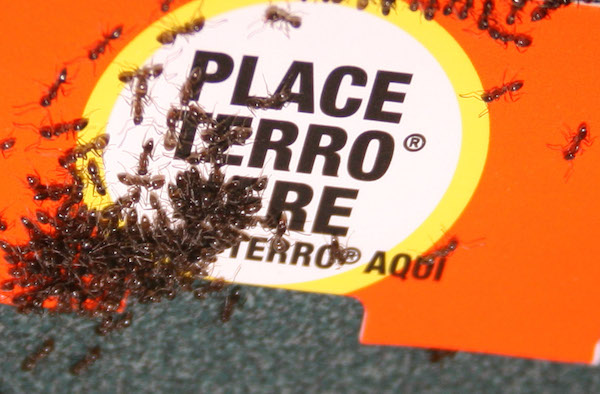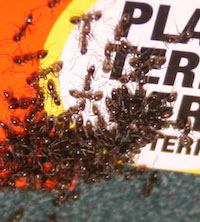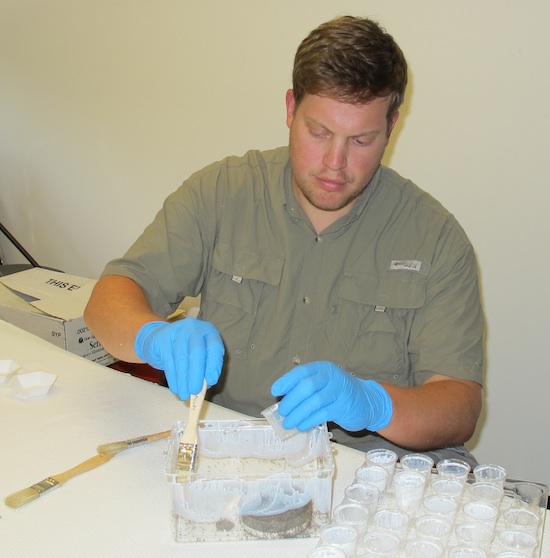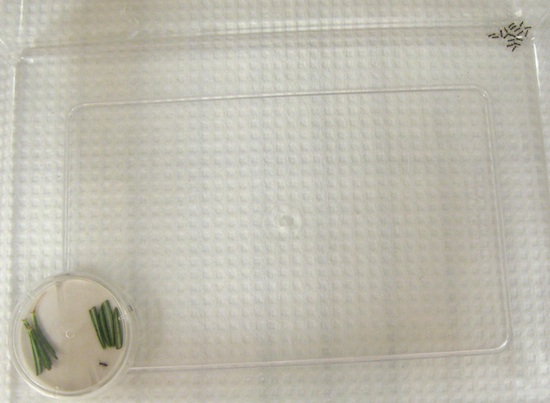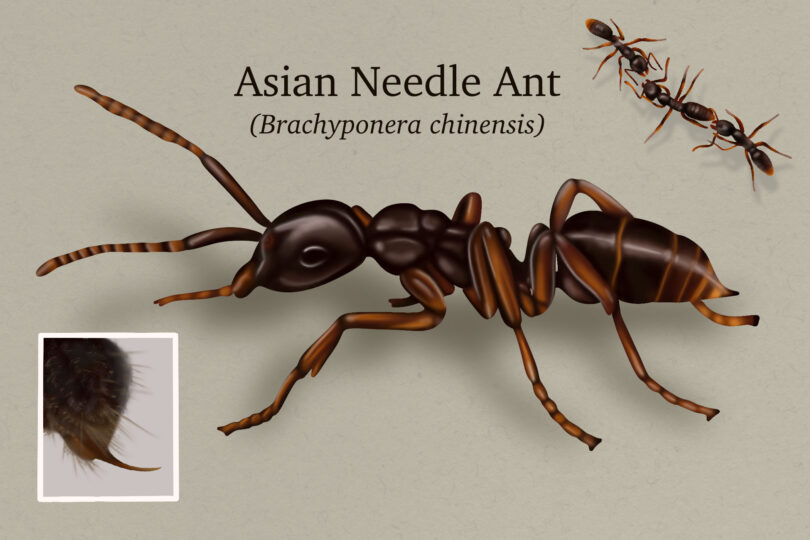Grits sprinkled over fire ant mounds, plastic bags filled with water to repel flies and high-frequency sound waves to chase away rats and mice—these are just a few non-chemical methods rumored to work as pest repellents.
Jacob Holloway, University of Georgia undergraduate and graduate alumnus, put a few natural remedies to the test as part of his Master’s thesis for the College of Agricultural and Environmental Sciences.
“The idea for this project came primarily from the book ‘1001 All-Natural Secrets to a Pest-Free Property’ by Myles Bader,” said Holloway, who conducted his work alongside UGA Griffin Campus entomologist Dan Suiter. “We got the book and decided to try a few of the purported all-natural cures for insect problems. Most are old wives’ tales that have been passed down, but a lot of the recommendations are ineffective and even dangerous.”
Argentine ant control
Holloway focused on ways to control the Argentine ant, a major household pest in Georgia. “They are very prevalent in the metro-Atlanta area. Often, if you see ants trailing inside or outside, they are Argentine ants,” he said.
Generally, Argentine ant populations are higher in the spring or early summer and start to decline in the fall.
The book recommends the use of a tea made from soybean stems to control Argentine ants. “To make the soybean tea, we soaked the stems in water overnight, just like the recipe in the book,” he said.
Holloway took this remedy a few steps further and also tested the use of dry and fresh tansy, fresh rosemary, fresh spearmint, and dry and fresh cucumber as ant repellents.
For the study, 20 ants were placed in small shelters with the natural material to be tested. “We then watched to see if the ants stayed away,” Holloway said. The ants’ reactions were measured two and four hours after the material was introduced into the habitat.
Most natural substances had no effect
Holloway found the ants did not react to the tansy leaves, soybean tea or pieces of cucumber peel.
Four stems of fresh rosemary cut into half-inch sections were also placed in the habitats. The fresh rosemary repelled “almost 100 percent” of the ants, he said. “There’s an existing product that contains rosemary oil, so I wanted to see how fresh rosemary fared.”
Holloway was motivated to test the natural remedies in an effort to help consumers avoid wasting time and money on ineffective products. “If you use a product that doesn’t work, you are still right back where you were, but with less money in your pocket,” he said.
Holloway’s trials were conducted on the UGA campus in Griffin. “Although the fresh rosemary repelled ants for four hours, I can’t promise anything after those four hours,” said Holloway, who now works with the U.S. Army to control pests on military installations.
For more information on controlling Argentine ants, see UGA Extension publication no. C926 at www.Extension.uga.edu/publications.

